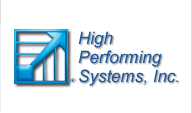Curt Cisrow is a senior consultant at High Performing Systems, Inc., with more than 40 years of combined experience in manufacturing leadership, human resources management and consulting/training. His areas of expertise include organizational assessment, leadership skills development and coaching, conflict resolution, fair employment practices (managing diversity), high performance team building and process improvement.
A leader’s ability to manage emotions and interact successfully with colleagues at all levels across an organization is directly linked to that leader’s ability to achieve the highest performance potential. That is because Emotional Intelligence (EI) is a key driver of how people relate to each other—how they get along. If emotions are misinterpreted in a professional setting, emotionally charged encounters can escalate, leading to damaged relationships and/or poor decisions. Although we are addressing adding value using EI in the workplace, understanding and managing our emotions is also applicable in our personal lives.
We have found that leaders high in various combinations of EI competencies outperform leaders who are weak in those areas. When EI competencies are used in selection, for example, organizational performance and retention rates increase significantly. A systematic and committed approach is necessary to build emotionally competent organizations. A strategic cycle of assessment, learning, practice and feedback over time will enable organizational members to build competencies that can help develop high-performing leaders for the organization.
The simple answer is that we find it to be easy to administer and interpret. While the EQ-i 2.0 is not the sole indicator of human performance and development potential, the results are extremely predictive of how the person actually behaves in terms of Emotional Intelligence. The five Composite Scales and fifteen Subscales provide us with the vital data we need to provide our clients valuable insight in leader development.
Early in my career as a young Regional HR Manager with a large chemical company, I would have given anything to have a scientifically-validated tool like the EQ-i 2.0 to assist me and other managers with our decision making processes regarding employee selection, succession planning, organizational development, executive coaching, as well as for team building. With the advent of global business relationships and increased cultural, race, and gender diversity in the workplace, all leaders need to garner a greater appreciation for the value of a tool like the EQ-i 2.0 as a means for improving communication and relationships.
HR and OD leaders in today’s workplace certainly face obstacles and resistance to the concepts of EI. Historically leaders have been rewarded for achieving results using any means necessary, and that rarely meant taking into account their own feelings or the feelings of others. Old paradigms die hard. Motivational factors also make EI more difficult to embrace than cognitive learning. It often involves ways of thinking and acting that are more central to an individual’s identity. The prospect of needing to develop greater emotional competence is not easy for us to take. Thus, it is more likely to generate resistance to change.
As easy as EI is for those who have it naturally, it is much harder for those who need to learn it. For example, others may think you are empathetic and aware or you aren’t. You either have good impulse control or you don’t. You manage your stress well and not create stressful situations for others or you don’t. But the reality is that by integrating EI strategies for enhancing strengths and containing weak areas, we can all perform better than we are currently doing. Many people find it difficult to grow on their own or be anything other than what they are naturally, which is why you must continually train and coach the people who need it most! I certainly think the use of tools like the EQ-i 2.0 and EQ 360 to assist resistant leaders in recognizing their areas of opportunity to improve is a way to eliminate some of the challenges. This will foster individual as well as organizational
acceptance and growth.
Experts, no. However, I do believe “successful” leaders must have a working knowledge of the EQ-i 2.0 Subscales. As a leader, being able to recognize the behaviors of someone either too high or too low in a particular Subscale increases your ability to develop a better working relationship with that individual. Business is made up of human interactions and connections. Being savvy about how to connect, with self and others, is the key to being really successful on multiple levels.
When you invest in new equipment or technology to improve the efficiency and quality of your product for your customer, you see it as a wise capital investment. Along the same lines, making a commitment to assess and develop EI within an organization will deliver more successful interactions at all levels—both internally and externally. High Performing Systems uses the EQ-i 2.0 with our clients because we know it is a wise investment in their human capital and that it has proven itself time and again to improve performance within organizations. We also offer train-the-trainer EQ-i 2.0 certification so that HR/OD professionals are able to administer the assessment themselves and provide feedback and development strategies with their own clients. The bottom line is that using the EQ-i 2.0 to assess and develop Emotional Intelligence will drive success in every aspect of an organization with respect to interacting with customers and building relationships.
For printable PDF of this article, click here. |
